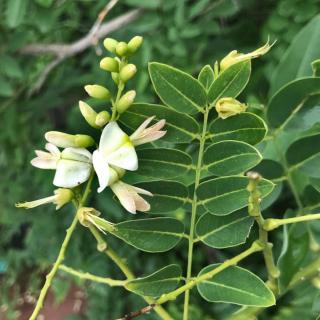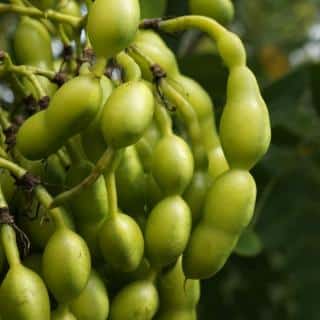

Let us introduce the elegant Styphnolobium japonicum, the perfect tree to add refined volume to your garden thanks to its airy leafage.
Botanical name – Styphnolobium japonicum, formerly Sophora
Common Name – Japanese pagoda tree
Family – Fabaceae
Type – slow-growing tree
Height – 60 feet (20 meters)
Breadth – 45 to 60 feet (15 to 20 m)
Exposure – sun to shade
Soil – deep, not chalky
Hardiness – hardy
Foliage – deciduous
Flowering – end of summer for older specimens

The elegant Sophora japonica also exists in a weeping form (S. japonica ‘Pendula’). This cultivar is much smaller. It has a particularly appealing bearing that completely transforms the appearance of the garden. Branches hang over, creating an intimate hiding place underneath. In winter, the leaves fall and the lovely umbrella-like branches are revealed.
A major advantage of Sophora japonica is that it doesn’t have very stringent requirements to grow. Though it can adapt to nearly any growing environment, you’ll have the best results with deep soil – the less chalky, the better – and lots of warmth and full sun.
As for most trees and shrubs, success is most guaranteed when planting Sophora japonica in Fall. This makes settling in easier. However, thanks to its adaptivity, it’s possible to set it up in Spring.

Multiply your pagoda tree by sowing its seeds in pots, in a cold frame. Before planting, soak them for a few hours in a glass of water.
A naturally resistant tree, Styphnolobium japonica isn’t very vulnerable to either pests nor diseases.
A majestic tree, S. japonica will look nicest in large gardens and parks. Since it grows rather large, it’s usually planted as a standalone, eventually surrounded by a flower bed once it gets a bit taller. It immediately brings to mind visions of beautiful Japanese gardens.